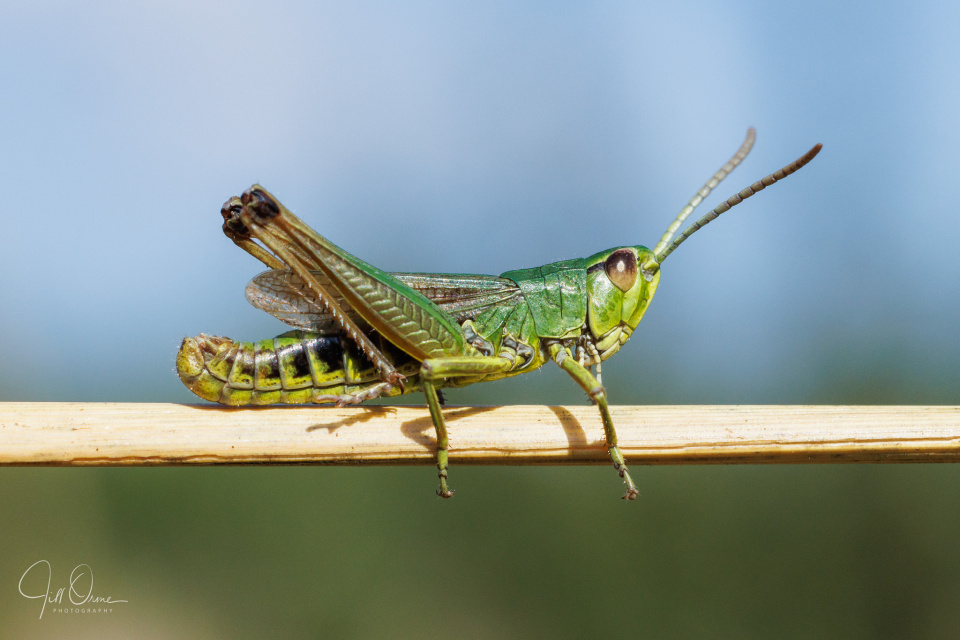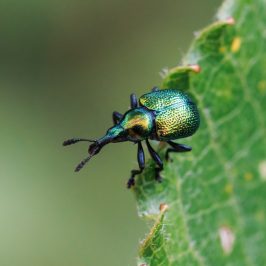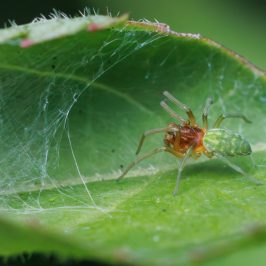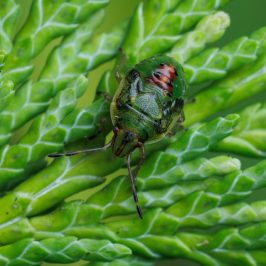Thanks to domestic pressures I didn’t manage to get out with the camera till late this afternoon, by which time it was so hot that in the garden even the flies had retreated to the shade. Having drawn a blank at home, I hoped I might have more luck with the grasshoppers at Tilly’s field, and happily that turned out to be the case. I managed to coax several of them onto a grass stalk to have their portraits taken, but my favourite was this male Meadow Grasshopper (Pseudochorthippus parallelus), who was bold enough to take advantage of his unexpectedly elevated position, and start singing for a mate.
Different insects have slightly different methods of creating the chirring sound known as stridulation, but grasshoppers do it by rubbing tiny pegs on the insides of their hind legs along the edges of their wings – rather like running the teeth of a comb across the edge of a knife. Orthopterists can identify different grasshopper species by their calls, but it isn’t something I’ve ever tried to learn – I have more than enough trouble recognising common bird songs.
Once again, it occurred to me long after the fact that I could have filmed this performance to illustrate my post, but given that I didn’t, you might like to look at this YouTube film of Meadow Grasshoppers calling. I rather like their French name, which sounds somehow more bucolically charming than the English version, though that may just be a case of the other man’s grasshopper being always… no, never mind.
A final bonus fun fact, courtesy of my ancient Latin dictionary: ‘stridulation’ derives from the Latin verb stridere, which means ‘to shriek, creak, hiss, or whistle’. ‘Strident’ and ‘stridor’ have the same root.
R: C4, D5.







